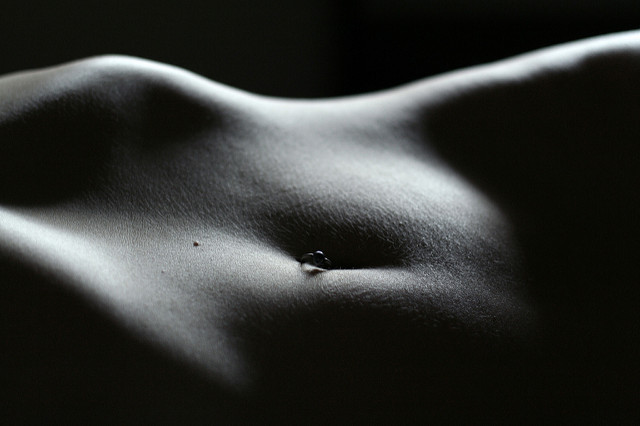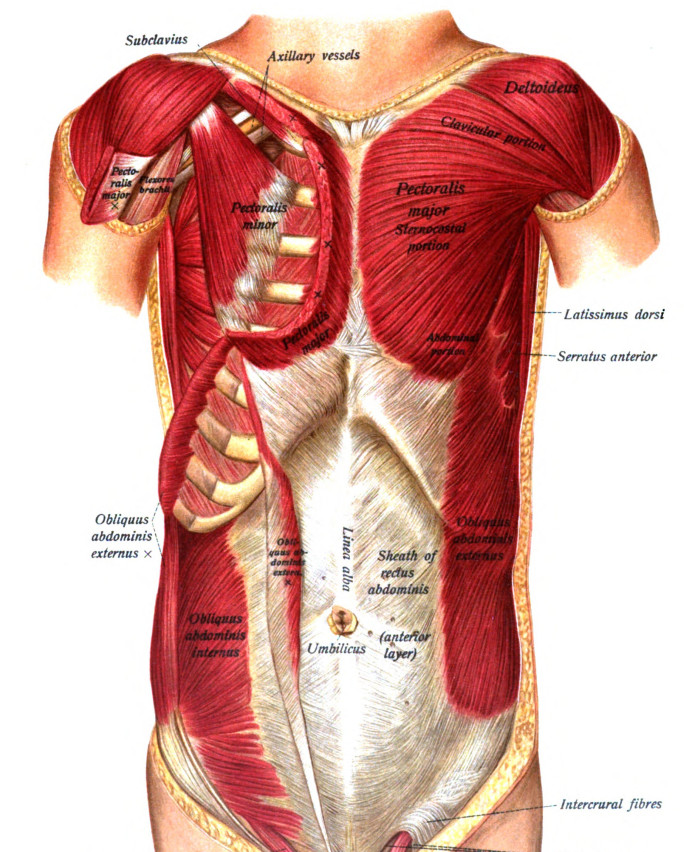After 8 years of practicing yoga regularly, for emotional and physical therapy alike, I’ve embarked on a new stage of my yoga journey by enrolling in 200-hour teacher training. I’ve had four weekends so far (about 1/3 of the training complete—hooray!), and it’s been one of the best challenges of my life. Not only does my body feel stronger and smarter already, but I’ve met an incredible group of people who are about as different as they come and yet united in a goal to gain more mindfulness and ultimately, either by actually teaching or just being a different kind of yogi on and off the mat, helping people feel better in their bodies.
We’re learning a lot about asanas, sequencing, philosophy, and Buddhism (sutras included!), but also anatomy. During one recent session, our teacher (an anatomy fanatic) explained the structure of muscles in great detail. If you didn’t already know, muscles are stringy, licorice-like fibers wrapped in papery tissues called fascia, which are bundled and wrapped in more fascia, and then those bundles are grouped together in more fascia…you get the idea. Fascia is in vogue these days among exercise experts for important reasons–it basically connects all of our body parts together, so if your fascia’s not healthy your body won’t move well. That’s a key thing for yogis and, you know, people who stand upright and walk around, to be aware of! In describing fascia to us, our teacher showed us a piece of clear saran wrap but said that in real life, it’s a kind of tough, white outer coating that’s hard to cut through, medically-speaking. A collective “eeew” permeated the room. Someone then asked, “So if fascia’s the white stuff, then what is fat?” Fat in the body is bright yellow, it seems. An even more pronounced grimace echoed in the studio.
Here’s where our teacher got a bit upset, and where my revelation happened. Why, she asked, do we all think fat is “gross”? And why is muscle, another soft tissue of the body, not only less gross but glorified and praised, something to attain and “build” rather than eliminate and “burn”? And bone–yet another tissue–is something to protect and nurture all through life, from children’s growing bones to the elderly’s enfeebled ones. Who came up with this tissue hierarchy? None of us would think or say, I don’t like my left foot today, so I think I’ll start some regimen of exercise and dieting to get rid of it. That’s crazy talk. We should similarly love all of our tissues with equal fervor for the important functions they serve in our body. Whoever or whatever created humans was certainly a master of efficiency, so it’s a safe bet that all our bits and bobbles are there for a reason.
Thinking about fat especially, the most ostracized tissue of the human body in the twentieth- and twenty-first-century Western civilization, in anatomical terms like this is not a radical idea for me, and it’s probably not for you either. But comparing fat so literally to muscle and bone and, yes, my left foot (which I still love even though it’s a little bigger than my right foot, and is the cause of much shoe-buying frustration) has made me see how ridiculous it is to qualify it so arbitrarily as “bad.” (Of course, too much fat (obesity-levels) is not good per se.) If you find yourself slipping into this mentality, too, keep in mind these 5 really, really good things (there are more, of course) that fat does for us:
1. Fat is an insulator. Yes, like a bear in hibernation (question: did you ever think a bear was “fat”? No), fat keeps you warm in winter and regulates your temperature in summer.
2. Fat is a built-in cushion. As someone with naturally low body fat, I know what it’s like to take a Pilates class or a tumble down the stairs (yikes!) and feel the crunch of bone on hard surfaces. It’s not fun. Fat protects our insides from all those dangerous things outside in the world that go bump in the night–and daytime.
3. Fat keeps you beautiful. So many women (and men) are paying loads of money for collagen injections and fancy “plumping” cosmetics. Save your hard-earned dollars and DIY those procedures by staying within a healthy weight range. Talk about a real inner glow!
4. Fat absorbs vitamins. Nutrition guidelines advise pairing carbs with fats for maximum vitamin absorption, and the same principle applies inside your body. Vitamins A, D, E, and K are all fat-soluble, which means they can’t get into you without fat as a conduit.
5. Fat regulates hormones. Extreme athletes with very low body fat percentages commonly have amenorrhea, or a loss of a menstrual cycle, because without fat their bodies don’t produce enough estrogen. Keep your lady-parts working as they should by maintaining, and flaunting, those feminine curves.
Remember high school biology class? There’s a reason we had to memorize all those muscles, bones, and fatty deposits–we need them all!
What are some ways that you love your body tissues? Share with us!
Also by Jennifer: Vegan Match Soba Noodles
Related: 7 Tips for a Healthy Relationship with Your Body
5 Things to Remember When You’re having a Bad Body Day
Get more like this—Subscribe to our daily inspirational newsletter for exclusive content!
Photo: Alejandro Monge via Flickr, Wikimedia Commons






